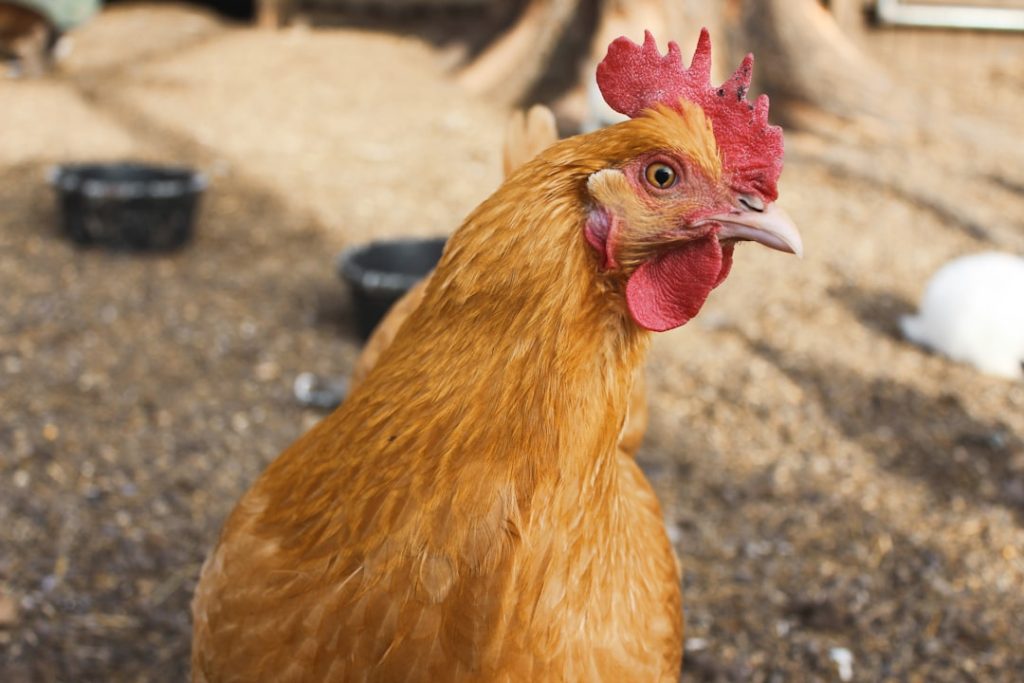Blue egg laying chickens are a distinctive and intriguing variety of poultry. These birds produce eggs with shells that exhibit colors ranging from pale blue to green, a characteristic that distinguishes them from other chicken breeds. The unique coloration of their eggs has made blue egg laying chickens increasingly popular among backyard poultry keepers and small-scale agricultural operations.
This article will examine the traits of blue egg laying breeds, highlight well-known varieties, discuss the factors that affect egg color, provide information on proper care and husbandry, and outline the advantages of raising these specialized chickens.
Table of Contents
Key Takeaways
- Blue egg laying chickens are a unique and popular choice for backyard poultry enthusiasts.
- Characteristics of blue egg laying breeds include their ability to lay eggs with shells ranging from light blue to green in color.
- Popular blue egg laying chicken breeds include Ameraucana, Araucana, and Cream Legbar.
- Factors influencing egg color in chickens include genetics, diet, and stress levels.
- Care and maintenance of blue egg laying chickens involves providing a balanced diet, proper housing, and regular health checks.
Characteristics of blue egg laying breeds
Unique Characteristics
In addition to their striking appearance, blue egg laying chickens are prized for their ability to lay eggs with shells that range from light blue to green, adding a pop of color to the traditional egg basket.
Hardiness and Adaptability
These breeds are also valued for their hardiness and adaptability to different climates. They are known to be good foragers and can thrive in free-range or confined environments. Their friendly and docile nature makes them a great addition to family flocks.
Low Maintenance and Reliability
Overall, blue egg laying chickens are prized for their beautiful eggs, striking appearance, and friendly disposition. They are also known for their ability to lay consistently throughout the year, making them a reliable source of fresh eggs. Their low maintenance requirements and hardiness make them an ideal choice for beginner chicken keepers.
Popular blue egg laying chicken breeds

There are several popular blue egg laying chicken breeds that are sought after by poultry enthusiasts. One of the most well-known blue egg laying breeds is the Araucana. This breed is known for its distinctive tufts of feathers near its ears and its ability to lay eggs with bright blue shells.
Araucanas come in a variety of colors, including black, white, and brown, and are prized for their unique appearance and friendly disposition. Another popular blue egg laying breed is the Ameraucana. This breed is a descendant of the Araucana and is known for its ability to lay eggs with shades of blue and green.
Ameraucanas are also valued for their gentle nature and adaptability to different environments. The Cream Legbar is another popular blue egg laying breed that hails from Britain. This breed is known for its striking appearance, with a crest on its head and a sleek body.
Cream Legbars are prized for their ability to lay eggs with light blue shells and are valued for their friendly and active personality. Additionally, the Easter Egger is a popular blue egg laying breed that is known for its colorful eggs and friendly demeanor. Easter Eggers come in a variety of colors and patterns and are valued for their ability to lay eggs with shades of blue, green, and even pink.
Overall, these popular blue egg laying chicken breeds are sought after for their unique egg color, striking appearance, and friendly nature.
Factors influencing egg color in chickens
The color of a chicken’s eggs is influenced by several factors, including genetics, diet, and age. The genetics of a chicken play a significant role in determining the color of its eggs. Blue egg laying breeds, such as the Araucana and Ameraucana, carry a gene that causes the deposition of blue pigment on the surface of the eggshell.
This gene is responsible for the unique blue and green hues found in the eggs of these breeds. Additionally, the diet of a chicken can also impact the color of its eggs. A diet rich in pigmented foods such as marigold petals or certain grains can result in deeper and more vibrant egg colors.
The age of a chicken can also influence the color of its eggs. Young hens may lay eggs with lighter shells that darken over time as they mature. Additionally, environmental factors such as stress or illness can impact the color of a chicken’s eggs.
Overall, the color of a chicken’s eggs is influenced by a combination of genetic, dietary, and environmental factors that contribute to the unique hues found in blue egg laying breeds.
Care and maintenance of blue egg laying chickens
Blue egg laying chickens require similar care and maintenance as other chicken breeds. Providing a suitable coop with ample space, ventilation, and protection from predators is essential for keeping these birds healthy and happy. Additionally, access to fresh water, high-quality feed, and opportunities for free-ranging or dust bathing are important for meeting their basic needs.
Regular health checks and parasite control are also crucial for maintaining the well-being of blue egg laying chickens. It is important to provide a balanced diet that includes a mix of grains, protein, vitamins, and minerals to support optimal egg production and overall health. Blue egg laying chickens should also have access to calcium supplements or crushed oyster shells to support strong eggshell formation.
Regular cleaning of the coop and nesting boxes is essential for preventing disease and maintaining a clean environment for the birds. Overall, providing proper care and maintenance is essential for keeping blue egg laying chickens healthy and productive.
Benefits of raising blue egg laying chickens

Unique and Valuable Eggs
One of the primary benefits is the production of stunning and unique eggs that can add value to a small-scale egg business or provide a pop of color to the kitchen table. The distinctive blue and green hues of these eggs make them highly sought after by consumers who appreciate their aesthetic appeal.
Ideal for Backyard Flocks or Family Farms
Blue egg laying chickens are also valued for their friendly nature and adaptability to different environments, making them perfect for backyard flocks or family farms. Their ability to thrive in various settings makes them an excellent choice for those with limited space or resources.
Reliable and Low-Maintenance
Another significant benefit of raising blue egg laying chickens is their ability to lay eggs consistently throughout the year, providing a reliable source of fresh eggs for personal consumption or sale. These chickens are known for their hardiness and low maintenance requirements, making them an ideal choice for beginner chicken keepers or those with limited time for care.
Overall, the benefits of raising blue egg laying chickens include the production of beautiful eggs, friendly disposition, adaptability, and reliability in egg production.
Choosing the right blue egg laying breed for your flock
In conclusion, blue egg laying chickens are a unique and charming addition to any flock. Their striking appearance, friendly nature, and ability to lay eggs with colorful shells make them highly sought after by poultry enthusiasts and small-scale farmers. When choosing the right blue egg laying breed for your flock, it is important to consider factors such as egg color preference, temperament, climate adaptability, and maintenance requirements.
Popular breeds such as the Araucana, Ameraucana, Cream Legbar, and Easter Egger offer a variety of options for those looking to add a pop of color to their egg basket. Ultimately, selecting the right blue egg laying breed depends on individual preferences and specific needs. Whether you are drawn to the vibrant hues of their eggs or their friendly disposition, blue egg laying chickens are sure to bring joy and beauty to any flock.
With proper care and maintenance, these unique birds can provide a reliable source of fresh eggs while adding a touch of color to your poultry experience. Consider adding blue egg laying chickens to your flock and enjoy the beauty and charm they bring to your farm or backyard!
If you’re interested in learning more about chicken coops, you should check out this article on the Producers Pride Sentinel Chicken Coop. This coop is designed to provide a safe and comfortable environment for your chickens, which can ultimately lead to healthier and happier birds. The article also discusses the importance of the coop’s floor and how it can impact the overall well-being of your flock. So, if you’re looking to upgrade or build a new coop for your chickens, this article is definitely worth a read. (source)
FAQs
What breeds of chickens lay blue eggs?
Some common breeds of chickens that lay blue eggs include Araucana, Ameraucana, and Easter Egger.
Do all chickens that lay blue eggs look the same?
No, chickens that lay blue eggs can vary in appearance. Araucana chickens have a distinct rumpless and tufted appearance, while Ameraucana and Easter Egger chickens can have a wide range of colors and patterns.
Are blue eggs different in taste or nutritional value compared to white or brown eggs?
No, the color of the eggshell does not affect the taste or nutritional value of the egg. Blue eggs are just as nutritious as white or brown eggs.
What causes chickens to lay blue eggs?
The blue color of the eggs is caused by a genetic trait that affects the production of a pigment called oocyanin, which is deposited on the eggshell during the laying process.
Can I breed chickens to lay blue eggs?
Yes, if you have chickens that already lay blue eggs, you can breed them to produce more blue egg-laying offspring. However, it’s important to note that not all offspring will necessarily lay blue eggs, as the blue egg-laying trait is influenced by genetics.
Meet Walter, the feathered-friend fanatic of Florida! Nestled in the sunshine state, Walter struts through life with his feathered companions, clucking his way to happiness. With a coop that’s fancier than a five-star hotel, he’s the Don Juan of the chicken world. When he’s not teaching his hens to do the cha-cha, you’ll find him in a heated debate with his prized rooster, Sir Clucks-a-Lot. Walter’s poultry passion is no yolk; he’s the sunny-side-up guy you never knew you needed in your flock of friends!







